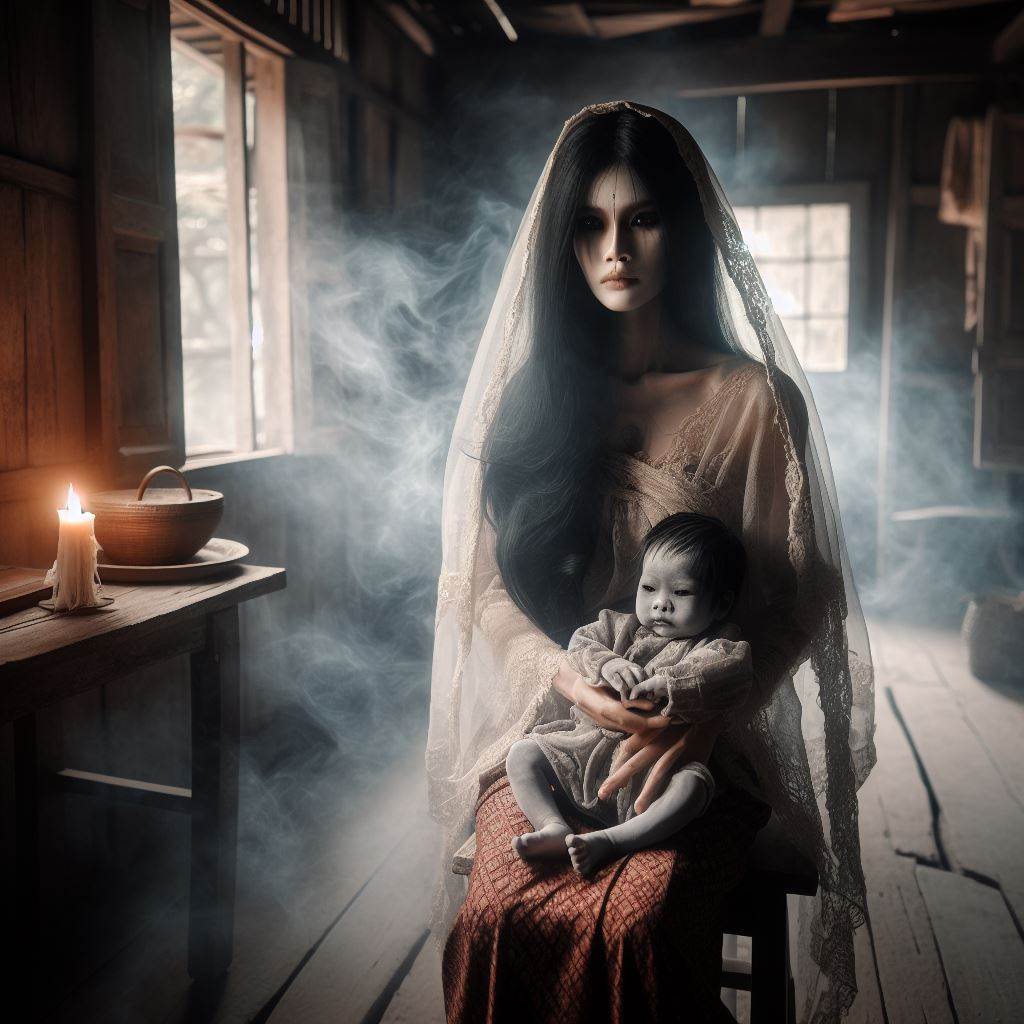Do ghosts exist? And can ghosts hurt you?
They’re age-old questions.
The idea of restless spirits lurking among the living has been giving us the heebie-jeebies for centuries, no matter where we’re from.
One side you’ve got your stone-cold skeptics who write the whole thing off as nonsense.
On the other are those true believers who swear they’ve made contact with the undead.
Whichever camp you fall into, there’s no denying our obsession with the paranormal subject runs deep.
Every culture has its own lore and legends about souls stuck between realms.
From that creepy girl in the haunted well to your dearly departed Uncle Frank rattling around the basement, these tales manage to captivate and terrify us all the same.
Especially because some people will even tell you that ghosts can physically assault you from the other side…
Is that true?
Can ghosts hurt you?
And what the heck ARE ghosts anyway?
It seems that no-one has the answers and that it’s all a big mystery.
But IS it?
What if there was an ancient spiritual tradition that’s been explaining all about spirits, the afterlife and our cosmic link to consciousness for thousands of years?
Yes, I’m talking Buddhism (surprise, surprise!).
Buddhist teachings have been laying the metaphysical groundwork for reincarnation, spiritual realms beyond the physical, and unlocking the deeper truths of our existence for centuries now.
So before you banish the idea of ghosts and the supernatural to the woo-woo basket, let’s take a look at what these ancient teachings have to say on the matter.
Who knows, we might just stumble onto a perspective that blows your average ghost hunter straight out of the paranormal waters.

Thai Ghosts & Ghost Stories
Here in Bangkok, ghost stories aren’t just bedtime stories or spooky campfire spinechillers.
They’re woven into the very fabric of Thai culture and spiritual beliefs.
According to Buddhist teachings, there are various realms of existence.
One of them is the realm of “hungry ghosts” or “Preta” in Pali (in Thai: “เปรต“, pronounced like the English word “bread” but will a rolling ‘r’).
These are beings who, due to their greed, attachment to the world, and negative karma from their previous lives, either wander in a state of metaphorical constant hunger and thirst.
They’re unable to satisfy their cravings, or wander in state of desperate sadness.
In Thai Buddhism, the belief in ghosts is deeply ingrained, and there are various types of ghostly entities that have become part of Thai folklore.
Types of Thai Ghosts
There’s the creepy “Phi Tai Hong” (a ghost of someone who died in some kind of accident).
The the terrifying “Phi Krasue” (a female ghost with a detached head and dangling intestines).
And don’t forget the heartbreaking “Phi Tai Tong Glom” (the ghost of someone who died in childbirth).
Tales of these supernatural beings have been passed down for generations.
Which brings us to the most famous ghost story in Thailand: the legend of Mae Nak Phra Khanong.
If we’re asking the question: Can ghosts hurt you? we need look no further than this classic story.
You might be vaguely interested to know that I currently live not too far from the area in Bangkok where this spooky tale is said to have taken place…
(And if you come to Bangkok, you can visit the spooky shrine to this vengeful ghost.)
The Story of ‘Maek Nak Phra Khanong’

[Image courtesy of www.thailandfoundation.or.th; cr Post Today]
Now of course, the whole area is part of the sprawling metropolis.
But back in the early 19th Century, when this story takes place, it was paddy fields and marshland.
The story goes like this:
Back in the early 19th century, a young woman named Nak lived with her husband, Mak, in the Phra Khanong district of Bangkok.
While Mak was away serving in the Siamese-Lao war, Nak tragically died during childbirth.
However, her spirit remained in their home, unaware of her own death, and continued to live as if she were still alive.
When Mak returned from the war, he was overjoyed to find his wife and newborn son waiting for him.
However, he was completely oblivious to the fact that they were both ghosts.
This continued for some time until Mak saw his wife Nak do something physically impossible:
She extended her arm several feet to retrieve a lime that had fallen through a crack in the floorboards and onto the floor one storey below.
After realizing that something very spooky was going on, he bent down and looked between his legs.
And that’s when he saw that his entire house was actually in state of collapse, covered in dust and cobwebs.
Clearly, Mae Nak’s housekeeping hadn’t been working.
Because she’d been dead the entire time.
And so has his child.
The story ends with a witch doctor being summoned in an attempt to get rid of her.
But unfortunately, he’s not skilled enough and it just makes her mad!
Later, a revered monk (Somdej Toh) arrives and convinces her to see the reality of her situation and finally find peace.

(Check out the Thai movie!)
The story has been made into a movie (several in fact, but the original is the best) and does, I think, have English subtitles.
It’s hard to find, but if you can it’s certainly worth watching.
Are Ghosts Real?
As was the case in the story of Mae Nak, Thai Buddhism offers various practical ways to deal with ghostly encounters and the fear they may evoke.
The key is cultivating compassion, wisdom, and understanding the concept of impermanence.
The first thing to say about the Buddhist idea of ghosts is that it’s VERY complex.
It’s also nested within some very big ideas that encompass teachings about multiple dimensions and a wide range of non-human beings that inhabit these different planes of existence (of which traditional ‘ghosts’ are one).
The Basics
According to Buddhist teachings, ghosts are real.
They’re beings that are trapped in a state of suffering due to their own attachments and negative karma.
Some ghosts are also just ‘lost’ and unaware of what happened to them at the point of death – they may not even know they are dead at all.
And then there are those who are so attached to what happened at their point of death that they keep reliving it.
In the Western tradition, we might refer to these types of ghosts as ‘residual hauntings’ but there’s nothing residual about them.
They ARE really there and are reliving things (often their final moments) over and over again in what seems like an endless loop.
But the truth is, the loop WILL end at some point and a new rebirth will eventually happen.
Either that or someone intervenes and helps them to move on to a different plane of existence.
Dealing With Difficult Spirits
There are some differences between the way we seem to deal with ghosts and hauntings in the West versus the East.
Theravada Buddhists will take a compassionate approach.
They will try to get the ghost to understand what’s happening, giving them the clarity and opportunity to move to a better dimension.
It’s also the case that the person dealing with the spirit doesn’t want to make the spirit suffer more than they already are and doesn’t want to make any ‘bad karma’ for themselves, so will treat them with respect.
Compassion & The 10 Perfections
Compassion (in Pali: metta) is also one of the ‘paramitas’ or ‘perfections’.
The ten perfections in the Theravada tradition are:
(1) generosity (dāna)
(2) morality (sīla),
(3) renunciation (nekhamma)
(4) insight (pañña)
(5) energy (viriya)
(6) patience (khanti)
(7) truthfulness (sacca)
(8) resolution (adhiṭṭhāna)
(9) loving-kindness (metta)
(10) equanimity (upekkhā)
These are the qualities that lead to buddhahood, if practiced diligently and to perfection.
Exorcism

In the West, though, metta generally goes out the window when dealing with spirits.
Instead, we tend to use exorcism to get rid of them, which is a much more brutal way of dealing with things.
Essentially, it’s a power game where the exorcist tries to completely overpower and control the spirit.
Considering the fact that the spirit is already in great distress, it doesn’t seem to be the most helpful approach.
It’s certainly not the most compassionate. . .
Movies and books have done a great job of scaring the bejeezers out of us and convincing us that ghosts are something to be feared.
But the reality is quite different.
Facing Our Fears
Yes, there are some nasty ones that want to cause trouble, but they are very few and far between.
Normally, ghosts will often appear to you either because they are trapped in some kind of loop and reliving things, as I said earlier, OR because they are somehow connected to you and/or think you might be able to help them – which you can, if you have the presence of mind to not completely freak out, and if you know how.
Meditation and mindfulness practices are powerful tools in overcoming fear and developing a deeper understanding of the impermanent nature of all things, including our own lives.
It’s also a good way to begin to understand that what we perceive with our five senses – and what we’ve been taught in school – is not all there is.
Monk In The Mountains
During my time as a monk up in the mountains of Northeast Thailand, I had to take the long walk at night up to my little hut on the edge of the mountain and then sleep there by myself overnight.
Mindfulness was the only thing that kept me from feeling scared by the very strange things I saw and heard.
Because I had knowledge about the reality of what ghosts and other ‘supernatural beings’ were and what to do if I encountered any, the stories I’d been told about the jungle there being haunted didn’t worry me too much.
(I’d also been told that the place was crawling with scorpions and a few cobras, which worried me MUCH more!)
The fact I was also an ordained monk and my meditation was pretty good also gave me some piece of mind.
Several very strange and inexplicable (at least by Western standards) things happened but I won’t go into them here.
I will, though, tell you about one simple one. . .
A Tents Moment
I remember once sleeping by myself in a small tent in the middle of the jungle and having a strange experience that I still can’t explain.
It was nighttime and I was sitting up in my tent meditating.
My senses were super sharp, and I was sitting peacefully, aware of my breathing and of the ambient sounds of the insects outside.
And then, all of a sudden, with no warning at all, there were three VERY hard slaps on the top of my tent, as if someone very large was slapping it with their hand as hard as they could.
And that was that.
Fortunately, my mindfulness was strong enough to register the event, observe my mind ‘pinging’ in response and then calm right down again.
I’ll never know what it was. . .
No Smoke Without Fire

Whether you buy into all this ghost stuff or just chalk it up to hocus pocus mumbo jumbo, there’s no denying that these stories have been woven into the human experience for as long as we’ve been around.
Across cultures, these tales of the undead represent our primal fascination with the great unknown that awaits all of us after we cash in our chips.
And there’s no smoke without fire, right?
Years ago, people would have scoffed at the idea of intelligent life forms inhabiting other planets in our universe, but more recently, any mathematician or physicist worth their salt would be happy to entertain that idea purely on number crunching, now we know just how potentially vast the cosmos really is.
And what about other dimensions?
Yep, Science is confirming those, too.
A New Scientific & Spiritual World
To my mind, those are just two of the items of a VERY long laundry list of Buddhist wisdom that Scientists in the West are gradually ticking off.
How long will it be before Scientific machines are powerful and subtle enough to measure more of the apparently paranormal things that Buddhism speaks of?
Time will obviously tell.
All I would say for now is this:
If you think that your five senses, and Western Science (as amazing as it is – don’t get me wrong) can tell you all you need to know about existence and you think that the gray blob in your head can figure everything out, be prepared to be well and truly mind blown in the years to come.
The unknown isn’t going anywhere, so even if we are not ready to have any confidence in what the Buddha taught, we could at least keep an open mind and be prepared to embrace whatever revelations await, however profound.
Who knows, we might end up discovering something far more trippy and profound than the bogeyman living under the bed.







0 Comments